So you’re an EMT operating at the BLS level, and you understand that when it comes to cardiac arrest, you’re the man. Sure, you’ll call for the medics if you get there first, but the stuff that’s really important — compressions and defibrillation — well, that’s right in your wheelhouse.
But it may seem a little simple. Simple is beautiful, but maybe you’re wondering what else you can do to really master the art of resuscitation, especially when you’re out there on your own. Take it up a notch, if you will. And a lot of the cool stuff that’s being tried in the big world, such as pit-crew choreography and various supportive devices, are only available if your service makes a large-scale decision to adopt them. What can you do as an individual provider to absolutely ensure your peri-dead patients have the best chance of survival?
Here are some ideas.
Don’t Stop Compressions, at All, Ever — Seriously, Just Don’t
Hopefully at this point you don’t need to be convinced that stopping compressions is a bad thing. It truly is. The mountain of evidence is unequivocal: any time spent not-compressing kills people; each interruption in compressions kills people; pausing after compressions before defibrillating kills people; pausing after defibrillating and before resuming compressions also probably kills people; and so forth.
The trouble is that, despite this knowledge, we still stop all the goddamned time. There’s a lot going on during a code, and a lot of things you might want to pause for. But let’s go through a few and see if we really have to stop:
Stop for Pad Application?
As soon as you found the patient, you began compressions, right? As long as they weren’t wearing a honking seal-skin anorak, you can do that just fine over a shirt, blouse, or other light garment. (Hint: anoraks and similar loose outerwear can often just be pulled off the arms overhead, like removing a T-shirt.) Bam, in you went.
Now your partner needs to apply AED pads, though. Should you stop what you’re doing? Heavens, no. Let him work around you if he needs. He can unzip, rip, cut around your hands, tug the fabric out from under them as pressure lifts between compressions, and clear as much of the chest as he needs. Then he can simply apply the pads. No interruptions, no problem.
In some cases, a CPR-feedback device will be present, either combined with the pads as a one-piece unit, or as a separate “puck.” Either way this usually needs to go between hands and chest, but you should be able to slip it under there with (at most) a brief hiccup in the rhythm
Stop for Rhythm Analysis?
Unfortunately, if you’re using an AED (rather than a manual monitor like the medics are toting), you will need to stop compressing and come off the chest in order for the device to analyze the rhythm. Otherwise, the electrical motion artifact produced will confuse the computer. So as soon as the device tells you to stop compressions for analysis, clear the body — but don’t go far (in fact, I would simply hover), and as soon as it’s finished, get back on there.
You may need to stop for manual rhythm analysis as well, but some monitors have a filter that can allow the medics to “read through” compression artifact.
Stop while Charging?
So the AED finished analyzing and advised a shock; now it’s charging. Can you compress during this period? Yes. Both common sense (it won’t shock unless someone pushes the button, so… don’t push the button) and at least one study (albeit for manual, not automated defibrillators) have shown this to be safe. There are some AEDs that will get confused if you compress during this time, so know your gear. [Edit: per our “para-engineer” friend Christopher Watford, the Philips FR2+, FRx, and FR3 AED models, plus the Zoll AEDPlus and AED Pro, may complain and possibly halt if you try to compress while charging or shocking. Lifepak AEDs should be mostly okay. Chris and David Baumrind — two of the conspirators behind EMS 12-Lead — wrote a feature for JEMS discussing the behavior of various AEDs if you attempt these maneuvers. Required reading!]
Once the device has charged and is ready to shock, clear everybody except the compressor, ensure that they’re clear, and coordinate between the compressor and button-pressor. Something like, “I’m going to count to three, and when I say three, I’m going to come off and you’re going to press shock, okay? One — two — [come obviously clear] and shock — aaand back on.” The actual defibrillatory shock takes a fraction of a second, and the device will verbally announce once it’s delivered, so you can get back on the chest almost immediately after pressing “shock.” There is no residual “charge,” it doesn’t “take a while” to deliver, it’s a quick blip, so you’ll only need to clear the chest for a moment — no more.
Stop while Shocking?
As a matter of fact, do we need to clear the chest to shock at all, or can we keep our hands down, compressing continuously while the electrons flow?
Instinctively, most of us say “No thanks!” However, a little logic suggests the risk may be low. Electricity follows the path of least resistance, and if pads are properly placed and well-adhered to the chest, this path should always be through the patient’s chest. The alternate path up into your hands is much longer, and will only exist at all if you have a connection to the ground, which (if present at all) will probably run through fabric and other insulators. Since almost all AEDs now are biphasic — these use less current than the old monophasic devices — and since pretty much everybody wears rubber gloves while they compress, risk is probably quite small.
The evidence supports this somewhat. Consider these studies: Lloyd, Neumann, Sullivan (supports multiple-gloving in my view), Yu, and Kerber.
This idea has been gradually gaining traction, and some folks have already started doing it routinely, mostly of their own volition. Salt Lake City Fire has even been experimenting with making it a standard option during all resuscitations. For the most part, the worst adverse effect reported seems to be a tingling sensation, particularly if there’s a tear in your gloves. It’s reasonable to ensure that you’re wearing intact gloves, especially over prolonged efforts (multiple shocks may break down the material), and probably wise to double- (or triple-) glove. If there’s a feedback device between your hands and the chest the risk is even lower (or you could lay something like a rubberized blanket over the chest to totally insulate yourself, as in the Yu study).
Now, everybody has a story about a guy who knows a guy whose ex-partner’s bartender was touching a patient during defibrillation, got blown across the room and set on fire, and now can’t pronounce vowels. For the most part, this seems to be purely legend. The trouble is that there isn’t sufficient evidence yet proving it’s safe to make this an official practice on a top-down level; but that doesn’t mean you can’t make the decision for yourself.
If you have an arrhythmia (especially with an ICD or pacemaker), or another legitimate reason to be concerned about your own heart, it’s probably reasonable to pass. For everybody else, to paraphrase Dr. Youngquist of SLC Fire, this practice is probably safe for providers — if not yet for administrators. So you might not see this in your protocols for a little while, but I’ll bet it doesn’t say not to do it, either. The decision is yours.
(There is a possibility that some AEDs, particularly those with feedback technology, may detect the ongoing compressions and refuse to deliver a shock. Again, see above for more info.)
Stop for Ventilations?
Until you get some kind of tube into the patient’s airway, you’re going to have a hard time bagging any air in unless you pause compressions first. One option would be to simply skip it and perform continuous compressions, which is very reasonable, especially early in the code, or really whenever in doubt. But if you do pause to ventilate, take as little time as possible — pause, breathe goes in, exhale, second breath, and then immediately back into compressions (no need to wait for the second exhalation).
Go Faster — and Probably Harder
The currently recommended rate for chest compressions is “at least 100 per minute.” In other words, that’s not a target, that’s a minimum. Can you go too fast? Probably, but it’s hard, and it’s much easier to go too slow.
There’s an accumulating body of evidence, however, that points toward a more exact rate — right around 120/minute. Up to that number, more people survive if you push faster; above that number, fewer survive. It’s not for-sure yet, but in this business, not much is totally sure.
Since it fits the official “over 100” recommendation anyway, I now use 120 as my target rate, and I think you should too. It does mean that your old go-to songs for musical pacing, such as Stayin’ Alive (or perhaps Another One Bites the Dust) won’t work anymore, since those are matched to 100/minute beats. But 120/minute is simply twice per second, and most people can approximate that pretty well, or you can find a faster song (try this app for suggestions).
With that done, are you pushing hard enough? The recommendations are at least two inches deep in adults, so you should at least be hitting that. (It’s deeper than you think.) But as much as some people are willing to go wild on the rate, few people ever seem to challenge the depth. Unless you are an 800-lb gorilla and the patient a 70-lb granny, you are unlikely to cause meaningful damage, and there is a direct link between depth of compressions and cardiac output. Try to really aim for the mattress, and whatever depth you’re hitting, even if you think it’s pretty good, go a little deeper.
The Knuckle Hinge
Does it matter how you hold your hands against the chest? Maybe.
What really matters is that you provide good compressions, but hand position can affect that. What you should do is find a CPR mannequin and experiment until you figure out what works best for you. But while you’re experimenting, here’s something to try.
Most people lay one palm over the back of their other hand, and either interlace their fingers (as the AHA videos usually depict) or don’t (I don’t, since I find it somewhat awkward, but since it forces your arms to externally rotate, it can help encourage providers to lock their elbows). Either way, as you meet the chest, you’ll be making contact with the heel of a palm and one set of knuckles.
“Glue” these knuckles to the chest; they don’t move, so once you’ve found your position, you’re locked-in. But each time you compress, do allow your palm to lift off the chest, “hinging” at the knuckles as they remain in contact. Don’t come up very far — just enough that you could slip a sheet of paper between palm and chest — but get a little daylight in there.
What’s the point? One of the more common errors when otherwise high-quality compressions are performed is a failure to allow the chest to fully recoil. You can go deep, but if you don’t come all the way up at the top, you’re still not producing the largest possible stroke. What’s more, unlike poor depth, this isn’t always obvious by looking at the chest (either to you or to others), so the safest method to ensure full recoil is to actually lift off the chest. If you remove your hands completely, though, you tend to lose your place, and your hands can “wander” until you’re pushing on the patient’s feet or your partner’s face. The knuckle hinge allows the best of both worlds.
Assign a Monitor
Isn’t this tiring? Now you’re pumping away crazy deep, twice a second, full recoil, and not stopping for almost anything.
Even if you’re an Olympic decathlete, this will start to wear you out fairly quickly. You’re full of adrenaline, and you’re a rockstar lifesaver, so you won’t say anything, and perhaps you won’t even notice; you’ll keep plugging away. But before long, you won’t be pushing quite as hard or deep, or quite as fast, or maybe you’ll start leaning on the chest instead of recoiling all the way. I promise you will; many studies have shown this; and what’s more, you’ll probably still think you’re doing good work.
No problem. As long as we have adequate manpower (and in most places, there are plenty of people on scene at a code), simply assign one person to monitor the quality of compressions. If it’s you, your sole job is to sit somewhere with your head close to the action, staring at the up-and-down, and ensuring it follows all the criteria we’ve discussed. If it needs to be faster, you tell them to speed up until they’re on pace. If it needs to be deeper, tell them. If they ever pause for any unnecessary reason, yell at them like an Italian grandmother until they start back up. And once it’s clear that they’re fatiguing, you make them swap out, and ensure that the swap happens with minimal delay. The AHA recommends switching every two minutes, but use a smart approach; some compressors will last less, some more, and if you reach a mandatory pause (for rhythm analysis, say), you might as well change even if the current person has some juice left.
Depending on resources, they may be swapping with you, or there may be enough people sitting around that you can have a rotating pool of dedicated compressors. You can maintain the same person as monitor (the easiest method, if you can spare them), or just have each on-deck compressor act as monitor.
Useful tools for the monitor include a watch with chronograph, but even better would be a metronome. That way you can set up an audible pace (120/minute, remember) that any monkey can follow. A few services do carry actual digital metronomes, but if not, most smartphones have metronome apps available. (Find and download it now, not in the patient’s living room.) You can also throw an MP3 from an appropriately-paced song onto your phone, if nobody minds running a code to a soundtrack (probably not ideal when there’s an audience). The monitor person can keep track of other times as well, such as the ventilatory rate once an advanced airway is placed, total duration of the code, times of medication administration, and so forth. A pad of paper or strip of tape down the leg are helpful.
An electronic feedback device is a helpful adjunct to this role, and if resources are limited can replace it, but it’s not quite the same. If it is available, tracking the automatic feedback (and ensuring the compressor obeys) is the monitor’s job.
Whether or not a monitor is assigned, everybody performing compressions (really everybody at the scene) should understand that it’s still their responsibility to ensure quality. This is particularly important when it comes to eliminating interruptions, because even if there’s somebody to yell at the compressor when he stops, if he’s stopping all the time that’s still a lot of pauses. An effort should be made when assigning a compressor (who isn’t you), such as a first responder or bystander, to make them understand that they “own” their compressions, and it’s their responsibility to do ’em right and stop for nothing. The monitor’s job? Just to keep them honest.
Ask Why
Cardiac arrest happens for a reason, and even though it’s the most time-sensitive, treat-the-ABCs syndrome that exists, there are still times when you’ll never fix the problem without understanding the cause.
In a perfect world, you’d show up, compress, apply AED, shock, get a pulse, the patient sits up and hugs you, you transport and all’s well. In a realistic world (depending on your area), usually ALS shows up at some point and things take a more technical direction. But if you’re working the arrest for more than a couple minutes, have adequate manpower, but are still BLS-only, then your extra providers shouldn’t be sitting around twiddling their thumbs; they should be gathering information, planning the next step, and preparing for transport.
Ideally, one person is running the code. Either that person or somebody competent he delegates to should communicate with family or bystanders, examine available records, dig through the meds, whatever — try to determine both the history of the present event, and a reasonably-complete past medical history and medication list. Partly, this is for later management; the medics or the ED may need it. But it’s for you, too, because it may suggest your course of care.
Without an ECG, you haven’t got much to tell you what’s happening, except that the patient’s got no pulse. (Auscultating the chest may indicate whether a regular heart rhythm is present which is simply not perfusing — PEA, or if you’re a magician you may be able to “hear” V-tach — but you have to stop compressions to appreciate much.) You’re unlikely to be able to magically predict whether you’re dealing with V-fib versus torsades versus asystole. But you may be able to guess that certain correctable causes are present.
For instance, was the patient complaining of classic MI symptoms (crushing chest pain, nausea and vomiting, dyspnea) for twenty minutes before he finally became unresponsive? And he’s had two heart attacks before, with several stents placed? It’s a fair bet that he’s had another, which caused this arrest, and you may not have much luck getting him back until that artery can be opened back up. You can and should still work him initially on scene, but your mental goal should be delivering him to a PCI-capable hospital, so while you do your thing, stay on that track. If you get a few “no shock advised” messages with no pulse, or perhaps shock once or twice but he remains severely unstable, try to get him packaged as you continue your awesome compressions, notify the hospital of the situation and your suspicions, and get him over there. Try for ALS, who can perform a 12-lead ECG, which will facilitate this process (and your protocol may not permit you to divert to a more-distant PCI hospital otherwise).
Do you have reason to suspect hypovolemia as the cause of arrest? Is there obvious external bleeding… or is there a rigid and distended abdomen, perhaps with a story of abdominal pain or blunt trauma? In that case, you can push or shock all you want; you’re not going to refill an empty pump. Maybe chest trauma with a potential tension pneumothorax or cardiac tamponade? Transport ASAP to a trauma center (and perhaps ALS, since they can decompress a pneumo and give some volume if appropriate).
Is this a hemodialysis patient who missed two sessions, has been lethargic and sick-appearing, poorly-tolerating exercise, and finally fell asleep and didn’t wake up? Suspect hyperkalemia, a true “ALS-curable” condition, so if medics are available, work it until they arrive. If they’re on the dark side of the moon, transport with the best compressions you can manage.
Is the patient a known diabetic, taking insulin, and a story consistent with hypoglycemia? Check that sugar if you can, and if it’s something perverse like 7 mg/dl, get them to either ALS or an ER — both can administer intravenous sugar.
Could it be a hypoxic arrest? All arrests are hypoxic after a few minutes — dead people don’t breathe — which is why it’s usually reasonable to breathe for them (although far from a top priority). But if you walk in to find a post-drowning victim, or a hysterical mother saying her child choked and now has no pulse, you may have a cardiac arrest whose underlying cause is nothing more than hypoxia: their heart didn’t get enough oxygen, so eventually it gave up too. They still need compressions, and may need to be shocked, but most of all they need oxygen, so opening the airway and bagging in high-concentration O2 is a top priority. (Compare this against the post-MI patient above, who doesn’t need any oxygen at all until you have enough hands to provide it without delaying compressions and AED use, and even then doesn’t need much.)
Possible pulmonary embolism? Poisoning? Commotio cordis? The list goes on. The point is, if you have the resources to take a moment, gather some information, step back, and think, you can often do a pretty good job of guessing what brought you here, even without the benefits of the ECG. In some areas, your policies and protocols will dictate pretty clearly what decisions you can make, and it may not matter much. But flip through that rulebook now, because often times people assume it says more than it does (for instance, “closest appropriate facility” is more common than “closest facility”). When in doubt, you can always call medical control and make your case.
(As a general point of safety: continuing CPR while packaging and transporting emergently is difficult at best, and both unsafe and low-quality at worst. This should factor into your decision-making, as should the specific obstacles presented by extrication, and the potential availability of a mechanical compression device, which can make the process substantially easier.)
Just don’t ever try to argue that only ALS is allowed to think.
BLS is all yours, and cardiac arrest remains a fundamentally BLS problem. Own it.
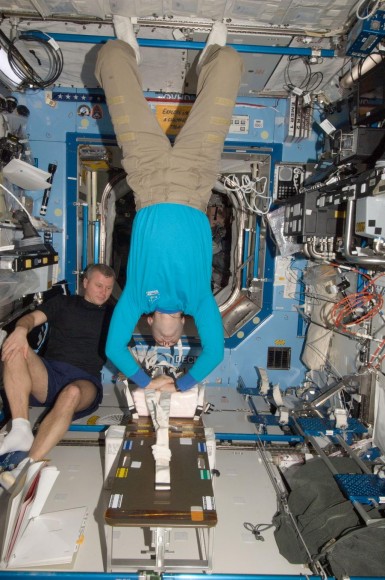

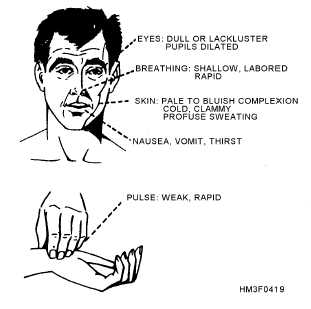
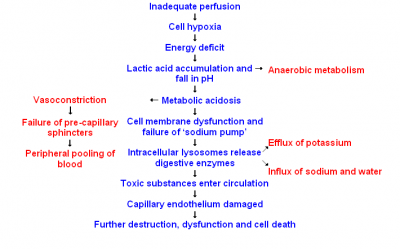
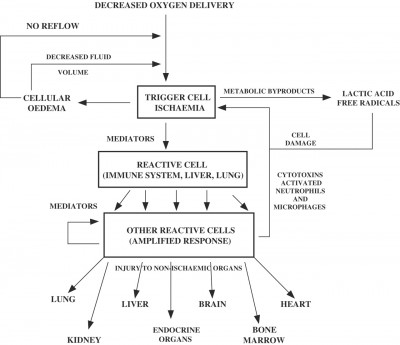
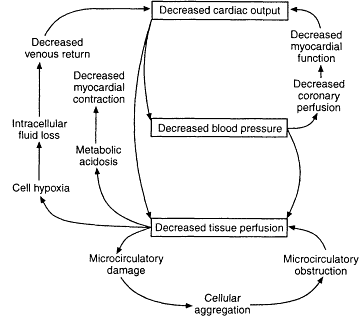
Recent Comments